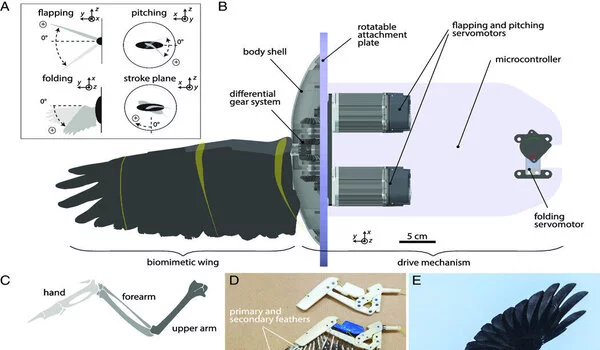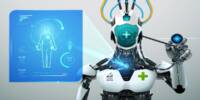Feathered robotic wings are a recent development in the field of robotics that mimic the structure and movement of bird wings. These wings are designed to flap in a similar manner to real bird wings, which allows for more efficient and precise flight control. This technology has the potential to be used in the development of flapping drones, which could be used for a variety of applications such as search and rescue, environmental monitoring, and aerial photography.
Feathered robotic wings are a type of wing design that aims to replicate the flapping motion of bird wings in order to create more aerodynamic and efficient drones. These wings are typically made from lightweight materials such as carbon fiber or aluminum, and are equipped with sensors and actuators that allow them to move and adjust their shape in response to changes in airflow. The technology is still in development, but it holds promise for creating drones that can fly with greater stability and maneuverability than current drone designs.
According to a recent study led by Lund University in Sweden, birds fly more efficiently by folding their wings during the upstroke. The findings could imply that wing-folding is the next step in improving the propellant and aerodynamic efficiency of flapping drones.
We created a robot wing that flaps more like a bird than previous robot wings but also flaps in ways that birds cannot. We studied how different methods of achieving the wing upstroke affect force and energy in flight by measuring wing performance in our wind tunnel.
Christoffer Johansson
Even the ancestors of birds, the extinct bird-like dinosaurs, benefited from folding their wings during the upstroke as they evolved into active flight. Birds are the largest and most efficient flying animals alive today. This makes them particularly appealing as a source of inspiration for drone development. However, determining the best flapping strategy necessitates aerodynamic studies of various flapping strategies. As a result, a Swedish-Swiss research team created a robotic wing capable of flapping like a bird and beyond.
“We created a robot wing that flaps more like a bird than previous robot wings but also flaps in ways that birds cannot. We studied how different methods of achieving the wing upstroke affect force and energy in flight by measuring wing performance in our wind tunnel” Christoffer Johansson, a biology researcher at Lund University, agrees.

Previous research has found that when birds fly slowly, their wings flap more horizontally. According to the new research, the birds do it even though it requires more energy because it is easier to generate sufficiently large forces to stay aloft and propel themselves. Drones can mimic this to increase the range of speeds they can fly at.
“The new robotic wing can be used to answer questions about bird flight that would be impossible simply by observing flying birds. Research into the flight ability to live birds is limited to the flapping movement that the bird actually uses,” explains Christoffer Johansson.
The research explains why birds flap the way they do, by finding out which movement patterns create the most force and are the most efficient. The results can also be used in other research areas, such as a better understanding of how the migration of birds is affected by climate change and access to food. There are also many potential uses for drones where these insights can be put to good use. One area might be using drones to deliver goods.
“Flapping drones could be used for deliveries, but they would need to be efficient enough and able to lift the extra weight this entails. How the wings move is of great importance for performance, so this is where our research could come in handy,” concludes Christoffer Johansson.
















